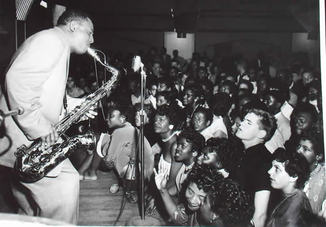Perhaps the most famous writer was a poet: Langston Hughes. Born in Joplin, Missouri, Hughes was a man made of elite education, receiving degrees from Columbia University and Lincoln University. His first poetry book, The Weary Blues, was published in 1924. His primary influence is claimed to be Paul Lawrence Dunbar, Carl Sandburg, and Walt Whitman. He is best known for his insightful, colorful, passionate, unfaltering portrayal of black culture in his poetry and books.
Harlem Renaissance also produced an unheard genre of music: Jazz. As jazz became widely known around the nation, it became classified as a sophisticated but fun form of art. With the advancement of the radio, many listeners began to tune in to the artistic talents of young African Americans. It was performed at nightclubs and its most notable sound was the dynamic saxophone.
This time in history is considered as the age of outbreak from traditional methods and the Harlem Renaissance was one of them. It created the term "New Negro" which described the more politically assertive, free, self-confident African Americans who took pride in their race and culture. As it grew from a town-wide to a nationwide revolution, a huge step was taken towards improving the perspective on African Americans.

Source:
http://www.jazzinamerica.org/lessonplan/5/4/251
http://www.ushistory.org/us/46e.asp
https://www.allaboutjazz.com/the-harlem-renaissance-and-american-music-by-mike-oppenheim.php
These ideas are very thought-provoking. It is interesting to see how African-American rights progressed in a similar way to how women rights progressed. They both found ways to discover and expand their newfound freedom. This makes this time period seem like a good time for normally oppressed people.
ReplyDeletewho took the photo of the guy jazzing out?
ReplyDelete